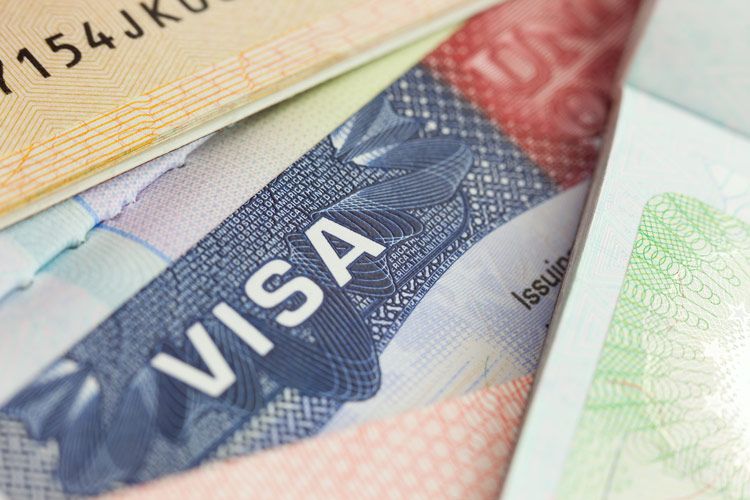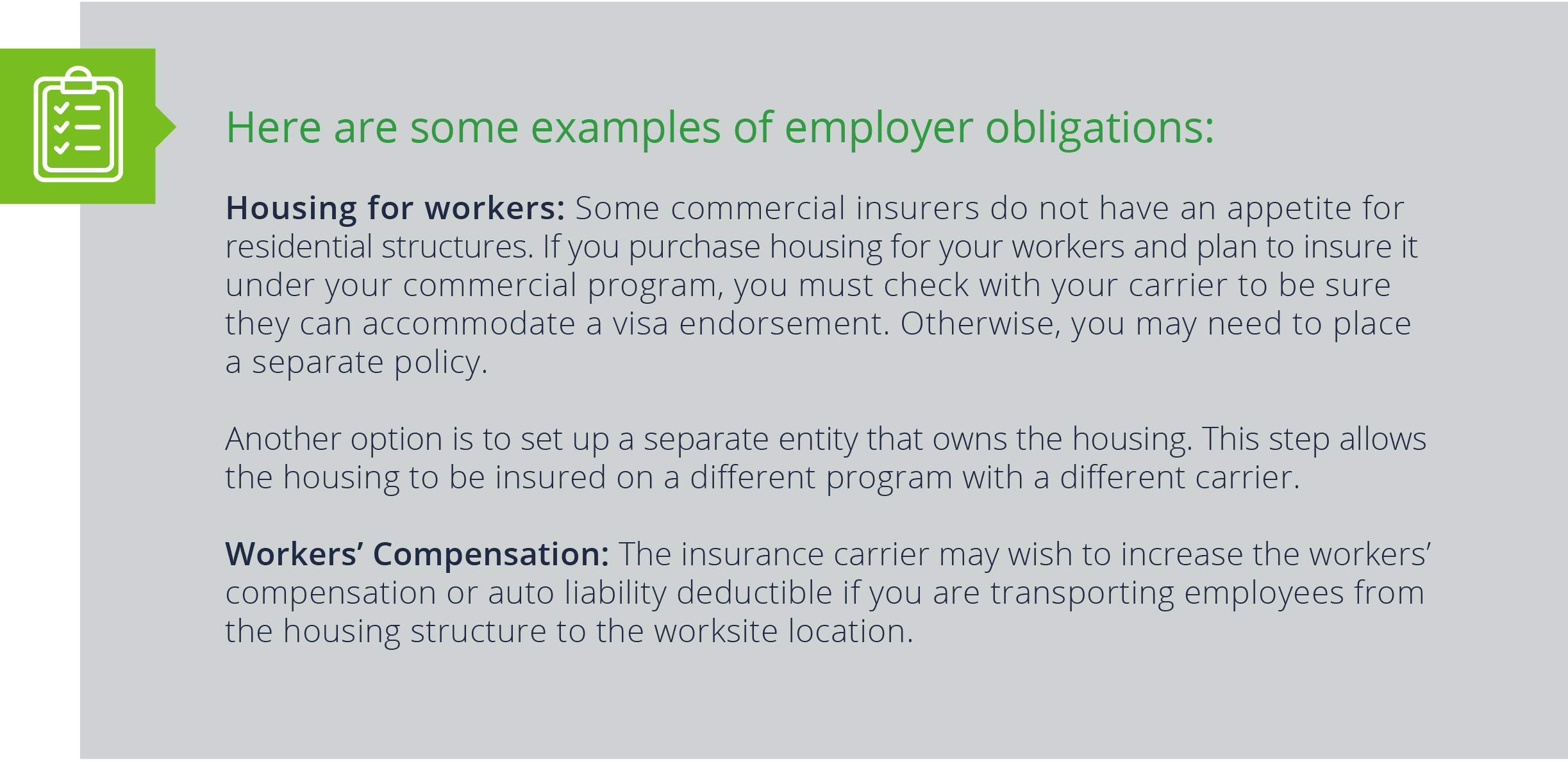Blog
Supplementing Your Workforce with H-2B Visas? Here’s What You Need to Know
For the second year in a row, the Department of Labor (DOL) and the Department of Homeland Security (DHS) have made available an additional 35,000 H-2B temporary non-agricultural worker visas for the second half of the fiscal year 2022.
This quantity, which is set aside for employers seeking additional workers through September 30, 2022, represents more than double the usual limit of 33,000 for the summer season. Of the additional 35,000 visas, 23,500 are intended for returning workers who received H-2B status within the past three years, and 11,500 are for returning or non-returning workers from El Salvador, Guatemala, Haiti, and Honduras.

In making the announcement, DHS Secretary Alejandro Mayorkas said the move is due to labor market demands and is designed to “support American businesses and expand legal pathways for workers seeking to come to the United States.”
Mayorkas also remarked, “Recognizing the importance of strong worker protections, we will apply greater scrutiny to those employers who have a record of violating obligations to their workers and the H-2B program.”
This article will offer information on the H-2B program, including how hiring H-2B workers can impact your insurance risk profile and what you can do to reduce your exposure to loss.
What is the H-2B visa program?
The H-2B visa program—an expansion of the prior H-2 program—allows US employers to hire foreign workers for temporary, non-agricultural jobs in US industries seeking seasonal, non-agricultural workers, including food processors, summer resorts, and more.
The terms of the employment must meet the following conditions:
- Employment must be for a limited period, such as a seasonal or intermittent need.
- The timeframe for the job must be less than one year.
- Employers must be able to prove that there are not enough US workers who are “able, willing, qualified, and available” to do the temporary work.
- Employment of the H-2B workers must not negatively affect US workers' wages and working conditions in similar jobs.
For their part, workers must have a valid offer for a job that has a shortage of American workers before applying to the DOL for an H-2B visa abroad. Applicants must demonstrate that they intend to return to their home country after the temporary employment.
An H-2B visa holder may bring their spouse and dependent children (unmarried and under the age of 21) with them to the US; however, their family members may not legally work in this country.
An initial H-2B visa is valid for up to one year. If an employer can demonstrate that it needs a worker for a longer period, and the worker can show that they still plan to return home afterward, the visa might be extended in one-year increments up to a maximum stay of three years.
What steps must employers take to apply for H-2B workers?
A US employer begins the process of hiring H-2B workers by advertising and recruiting US workers for open positions. If no workers are available, the employer should apply to its state workforce agency (SWA) for a temporary labor certification. The SWA then transfers the case to the DOL for approval.
After DOL approval, the employer must file an application with Form ETA-9142B and pay the appropriate visa application fees. For more information on the H-2B application process, visit the DOL overview of the program here.
Another option is to engage the services of a foreign labor recruiter. You can find a list of DOL-vetted companies here.
How does hiring H-2B workers affect your insurance?
Employers in a wide range of industries are feeling the brunt of the current labor shortage.
According to the US Bureau of Labor Statistics, professional and business services, education, transport, and warehousing are the industries with the highest number of job openings. And experts see no end in sight.
If you have temporary or seasonal openings, the H-2B program may be just what you need to get through a tough spot. However, employers need to be aware of how the program can increase their insurance risk profile.
There are several obligations the employer must fulfill, such as providing transportation in and out of a worker’s home country and providing housing and a safe work environment—and this added risk may not be automatically covered by your insurance program.

A potential solution is to create a “corridor deductible” that increases the per occurrence deductible if multiple employees are injured. However, this plan would only apply during the transportation of employees.
What about the language barrier?
When a worker’s native language is not the language spoken at the workplace, many challenges can arise. First and foremost, an employer must find ways to effectively train and supervise the employee in workplace safety and procedures to follow in the event of a workplace injury.
We offer the recent example of one of our insured’s difficulties with a language barrier: An H-2B visa employee, on the job for less than a month, was cleaning the production lines for a food processor while the equipment while powered off. The operator’s sightline was obstructed, and they turned the machine back on, causing severe injury to the sanitation worker.
While this accident would be scary for anyone, it was especially so for someone who was not fluent in English. The communication between employees at the facility and the emergency response personnel was challenging.
The employee was emergency transported to the hospital, where they underwent multiple surgeries and an eventual amputation. During this fast-moving medical situation, the employer struggled to reach the injured worker’s emergency contacts.
After their release from the hospital, the employee had a lengthy rehabilitation in a skilled nursing facility and connected with an attorney. These two factors, along with a risk of further medical complications, made communication more problematic and delayed progress on the claim. Given the engagement of the attorney by the injured worker, the employer was no longer allowed to communicate directly with the employee, which caused significant delay in resolving the claim.
As a result, the worker’s visa expired, and they had to remain in the US illegally. The total claim exceeded six figures.
How can you lower your risk?
In response to this very unfortunate situation, the employer implemented the following measures to reduce the risk of utilizing H-2B visa workers going forward:
- More due diligence around the vendor used to secure the visas and the countries where they recruit
- Additional translation services, including real-time mobile apps, to better handle the specific intricacies of different languages
- More detailed on-the-job training for employees
- Emphasis on creating an environment of asking questions if more information or training is needed
- Additional supervisor training, including education on different cultures
- Emphasis on a “see something, say something” workplace culture
Employers who want to supplement their workforce with foreign workers can take from this case study some important lessons. Chief among them is the need for an employer to communicate with their brokers and underwriters early on about their interest in hiring H-2B workers and their timeframe for doing so.
Here are some other steps you can take to lower your insurance risk profile when hiring H-2B workers:
- If you plan to house your workers, inquire about your Property and Liability insurer’s appetite for residential exposure.
- Ask about your Employment Practices Liability coverage.
- As part of your hiring process, ensure you know how to reach the employee's emergency contacts.
- Understand the coordination of occupational and non-occupational benefits.
- Update and expand employee training materials for the benefit of non-native speakers. Hire an interpreter if necessary.
- Train managers to monitor H-2B employees in terms of their understanding of and adherence to safety protocols.
If you have questions about your insurance coverage and how using the H-2B program may affect your risk profile, we'd be happy to talk with you—please contact your Woodruff Sawyer representative.
Author
Table of Contents













